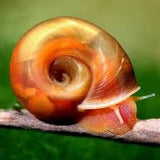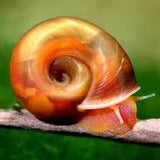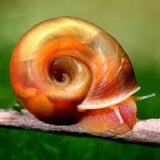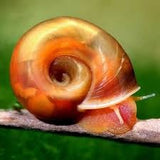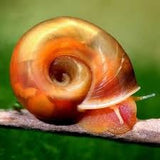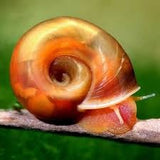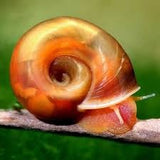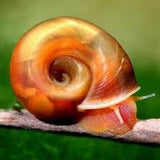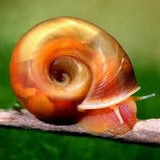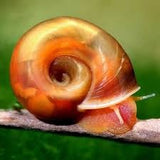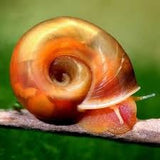This product is available instore only
Enquire below for further information
Aquarium Snails are a helpful cleaner for the fish tank.
Pisces Mystery Snails require water conditions similar to aquatic fish. In a small tank they can be crowded more densely than fish as they have a small ‘snorkel’ which they use to take in air.
It is possible to stock 1-2 large, 5 medium or 20 small snails to the litre. This ratio should be reduced to at least half if they are kept with fish to ensure that everyone has sufficient oxygen.
Tetras and barbs make excellent companions for snails, but tanks should always contain sufficient plants, rocks and ornaments to allow the snails to hide if they are being bothered.
Mystery snails can be fed on regular fish foods, but also respond well to a little tomato or crushed or boiled lettuce.
They do not eat live plants, but will clean up dead leaves or excess fish food. They also eat soft algae, but not hard, stringy or blue-green algae.
Mystery snails serve an important role in recycling fish droppings and extracting undigested nutrients that would otherwise pollute the tank. Mystery snails are a good indicator of the health of an aquarium. In poor conditions they will retract into their shells and close the ‘door’ (operculum).
They are sensitive to copper and other metallic poisons and you should avoid the use of algaecides, salt and preventative medications.
Mystery snails are available in four sizes small, medium, large and jumbo.
Pisces Red Ramshorn Snails are a little more difficult to grow than mystery snails but are easy to keep.
They are not sensitive to temperature and adapt to cold water or tropical tanks. Like mystery snails, they are air breathers and have a similar diet with a heavy reliance on vegetable matter. They will thrive if given a little tomato and this helps to keep their extraordinary colour.
The most common problem with Red Ramshorns is shell erosion caused by acidity and resulting in unsightly whitish-grey makings. This is a result of overfeeding, overcrowding and poor tank hygiene.
Pisces Mystery Snails require water conditions similar to aquatic fish. In a small tank they can be crowded more densely than fish as they have a small ‘snorkel’ which they use to take in air.
It is possible to stock 1-2 large, 5 medium or 20 small snails to the litre. This ratio should be reduced to at least half if they are kept with fish to ensure that everyone has sufficient oxygen.
Tetras and barbs make excellent companions for snails, but tanks should always contain sufficient plants, rocks and ornaments to allow the snails to hide if they are being bothered.
Mystery snails can be fed on regular fish foods, but also respond well to a little tomato or crushed or boiled lettuce.
They do not eat live plants, but will clean up dead leaves or excess fish food. They also eat soft algae, but not hard, stringy or blue-green algae.
Mystery snails serve an important role in recycling fish droppings and extracting undigested nutrients that would otherwise pollute the tank. Mystery snails are a good indicator of the health of an aquarium. In poor conditions they will retract into their shells and close the ‘door’ (operculum).
They are sensitive to copper and other metallic poisons and you should avoid the use of algaecides, salt and preventative medications.
Mystery snails are available in four sizes small, medium, large and jumbo.
Pisces Red Ramshorn Snails are a little more difficult to grow than mystery snails but are easy to keep.
They are not sensitive to temperature and adapt to cold water or tropical tanks. Like mystery snails, they are air breathers and have a similar diet with a heavy reliance on vegetable matter. They will thrive if given a little tomato and this helps to keep their extraordinary colour.
The most common problem with Red Ramshorns is shell erosion caused by acidity and resulting in unsightly whitish-grey makings. This is a result of overfeeding, overcrowding and poor tank hygiene.












